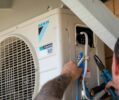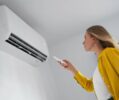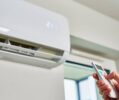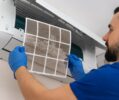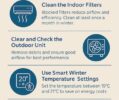In my years as an air conditioner installer and technician, I’ve talked to countless Perth homeowners who are so glad they invested in a reverse cycle air conditioner.
Our scorching summer months often get all the attention, but Perth winters can be surprisingly chilly. A reverse cycle air conditioner is the ideal way to keep your home cool in the summer while offering an option to heat it in the cooler months.
I put together this guide to preparing your reverse cycle air conditioner to heat during the cooler months so you can enjoy a comfortable home year-round.
Key Takeaways:
- Reverse cycle air conditioners can cool during hot days and provide heat on cooler days
- A heat pump air conditioner absorbs heat from the outside air and distributes it inside
- To prepare your reverse cycle air conditioner to heat, make sure you inspect it, clean the unit, clean the filters, and schedule professional maintenance if needed
- To maximise efficiency, set your reverse cycle air conditioner around 18 to 20 degrees C
- To keep your home warmer naturally, pair your reverse cycle air conditioner with energy-efficient habits such as letting sunshine in during the day and closing shades or blinds at night
- Schedule an annual professional inspection to catch issues early and maximise the lifespan of your reverse cycle air conditioner
What Is Reverse Cycle Heating?
Along with cooling homes in the summer, reverse cycle air conditioners can heat homes in the cooler months. In summer, a reverse cycle air conditioner draws out heat from inside and releases it outside. In cooler months, a heat pump air conditioner works by absorbing heat from the outside air and distributing it inside.
Reverse cycle air conditioners are energy efficient, cost-effective to run, and generate fewer greenhouse gas emissions than other cooling or heating appliances. Learn more about reverse cycle air conditioners and their benefits in my guide here: Reverse Cycle Split Systems: 6 Benefits of Owning One.
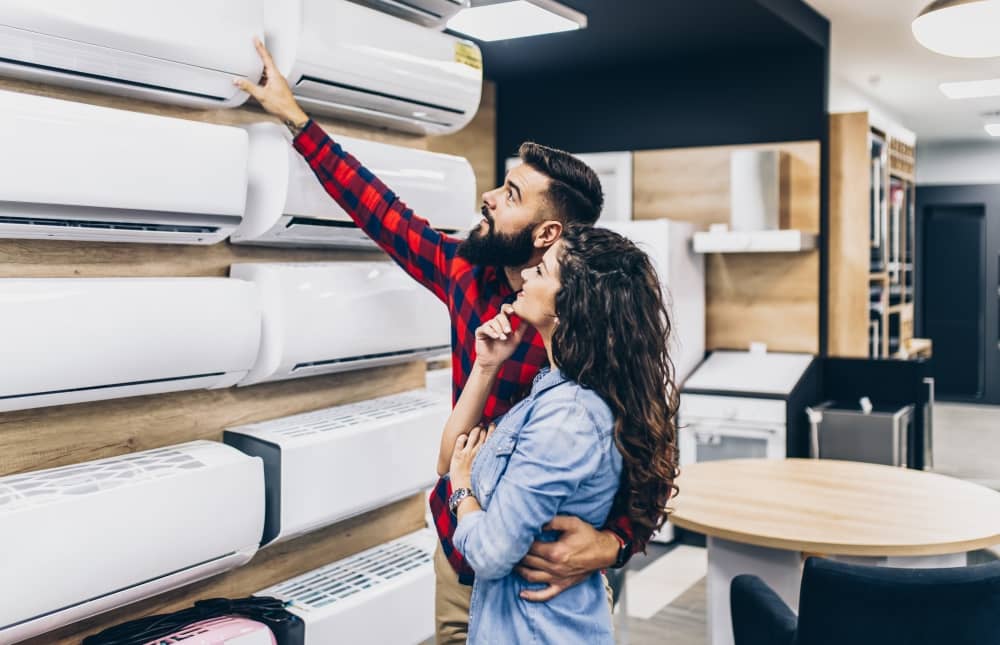
Preparing Your Reverse Cycle Air Conditioner for Heating in 4 Easy Steps
Step 1: Cleaning and Inspecting the Air Conditioner
Before switching to heating mode air conditioner functions, the first step is cleaning and inspecting the unit.
First, turn the unit on and listen for any odd sounds. You’ll also want to make sure there are no leaks inside or outside your home. If you notice unusual sounds or leaks, contact an air conditioning technician right away. If the unit runs well without any odd noises, turn off the power to clean the unit. Here are the steps I recommend to clean your reverse cycle air conditioner:
-
- Remove any debris, such as accumulated twigs or leaves on the exterior part of the unit
- Wipe the interior and exterior parts of the unit with a damp cloth to remove dust and debris
- Throughout the operating season, remember to occasionally repeat this step to wipe away any mould, mildew, dirt, or dust from the surface and vents
- Check the manufacturer’s instructions for any additional cleaning recommendations
Step 2: Adjusting the Settings and Temperatures
Once the unit is inspected and ready, switch the unit to heating mode. My clients often ask me, “What symbol is heat on air conditioner?”. The heating symbol on your air conditioner will depend on the model and manufacturer, but it is typically labeled quite clearly. If you cannot find the heat symbol on your air conditioner, check the manufacturer’s instructions or give us a call and we’ll be glad to walk you through it.
Once you switch your reverse cycle air conditioner to heating mode, you’ll want to adjust the thermostat. For optimal efficiency, I recommend setting your thermostat around 18 to 20 degrees Celsius. This temperature range is considered the most energy efficient and will keep you comfortable while saving on power bills.
The best air con temperature for you comes down to your comfort preferences. Some individuals may find that the best air con temperature in winter for them is 21 to 22℃. Remember that for every degree you increase the temperature, energy costs typically go up by 10%.
I cover more about the most energy-efficient temperature settings for air conditioners in my guide here: Best Air Conditioner Temperature in Australia: Tips & Recommendations.
Step 3: Testing Filters
The change of the season is a great reminder to check your reverse cycle air conditioner filters. If the air filter is dirty, the unit will work harder than it needs to and its efficiency will be reduced. A dirty air filter can also contribute to poor indoor air quality. I recommend cleaning your filter at least every 3 to 6 months and replacing it according to the manufacturer’s instructions.
Step 4: Schedule Professional Maintenance
To make sure your reverse cycle air conditioner is functioning properly and running efficiently, I recommend scheduling an annual professional inspection. Regular professional inspections can save you money on operating costs and maximise the lifespan of your reverse cycle air conditioner.
When we perform A/C inspections, our technicians:
- Ensure the unit is operating as efficiently as possible
- Clean the filters and replace them if needed
- Clean the coils
- Check refrigerant levels
- Detect and repair any issues
- Clean mould or mildew
You May Also Like: 5 Signs Your Air Conditioner Needs Servicing
What Are Natural Ways to Keep a Home Warm in Winter?
Here are some natural ways to warm up your home on chilly days and conserve energy:
- Open the curtains and blinds to take advantage of Perth’s sunshine
- Close the curtains at night to trap heat in your home
- Seals gaps in windows, doors, and walls to prevent cold drafts
- Close the vents and doors to any rooms that are not being used
- Invest in quality thermal shades or curtains to reduce heat loss
- Invest in quality installation if your home does not already have it
See more ways to stay warm and save on energy bills in winter with my guide here: Energy Saving Tips for Efficient Heating During Winter.
Stay Cool in the Summer and Cosy in the Winter with Perth’s Air Conditioning Experts
By following these simple steps, you can make sure your reverse cycle air conditioner is clean, functioning properly, working efficiently, and keeping your home cosy.
Air conditioner heating not working? Need help preparing your reverse cycle air conditioner for heating?
Our experts at Air Cond Installs WA are here to help. We’ve been helping WA homeowners enjoy cool homes in summer and cosy homes in winter for years and we’d be glad to help you too. We offer competitive pricing, free quotes, products from trusted air conditioning brands, and the best service in the industry.
Contact us with questions or for your free quote.

